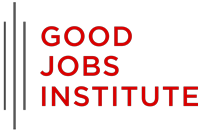The Good Jobs Strategy
 NACS partnered with the nonprofit Good Jobs Institute in January 2020 to bring the Good Jobs Strategy to the convenience store industry. The Good Jobs Strategy, which is a combination of investment in people and smart operating choices, increases employee productivity, motivation and contribution and promotes operational excellence. Case studies show that implementing the Good Jobs Strategy can grow a business and increase customer loyalty.
NACS partnered with the nonprofit Good Jobs Institute in January 2020 to bring the Good Jobs Strategy to the convenience store industry. The Good Jobs Strategy, which is a combination of investment in people and smart operating choices, increases employee productivity, motivation and contribution and promotes operational excellence. Case studies show that implementing the Good Jobs Strategy can grow a business and increase customer loyalty.
Full commitment to the Good Jobs Strategy requires time and resources, and the businesses that have embarked on this journey say the results are transformational to both to the bottom line and to their employee and customer experience.
Watch business leaders talk about the Good Jobs Strategy.
Transforming a company often means starting with making a case for change. This can be done by taking account of the urgency for change and also identifying the financial, competitive and moral reasons linked to the Good Jobs Strategy.
Taken together, the Good Jobs resources below can guide businesses down a path of making solid operational choices that increase employee productivity, contribution and motivation.
Watch Sarah Kalloch, executive director of the Good Jobs Institute, explain how the Good Jobs Strategy can help you retain and engage workers and implement operational efficiencies to drive financial success.
Deeper engagement with the Good Jobs Institute is available for NACS members. You can schedule a 1-on-1 meeting to answer any questions or participate in a complementary webinar to help walk you through the Good Jobs Strategy.

This tool can help illustrate the possible uplift of a good jobs system. Businesses use their own data and customized assumptions about the amount of improvement or uplift achievable, and executives can run scenarios on the bottom-line impact of a good jobs system. In addition to giving an overall “size-of-prize” range, quantifying these benefits can help executives understand what would have to be true—specific improvements in metrics like turnover, shrink, and basket size—to justify a given wage investment in creating a good jobs system.
To realize the most impact from the tool, have on hand data regarding revenue, transactions, profitability, total costs, turnover costs, shrink and labor hours. When opening the tool, it will lay out exactly what businesses need to know to complete the financial modeling exercise.
Watch to see how to use the Good Jos Calculator to quantify the benefits of implementing a Good Jobs Strategy.
This tool shows how well a company is delivering value to customers, employees and investors. Use this scorecard to clarify financial, competitive and moral reasons for change. Also, this tool can assist with goal-setting and track progress. Once performance gaps are determined, the Good Jobs Diagnostic (see next section below) will help businesses identify areas that need to change.
This survey identifies which elements of the Good Jobs Strategy a company might already practice and where it can improve. CEOs, senior executives and frontline managers should take the free assessment individually and then discuss in a larger group to realize the most benefit from the tool.